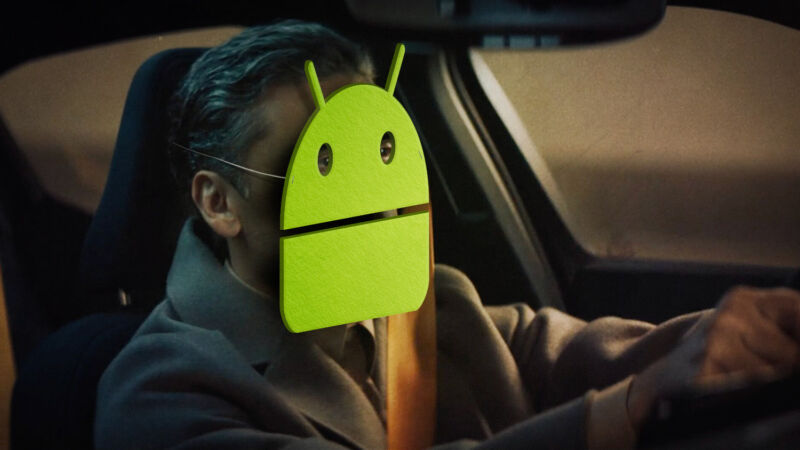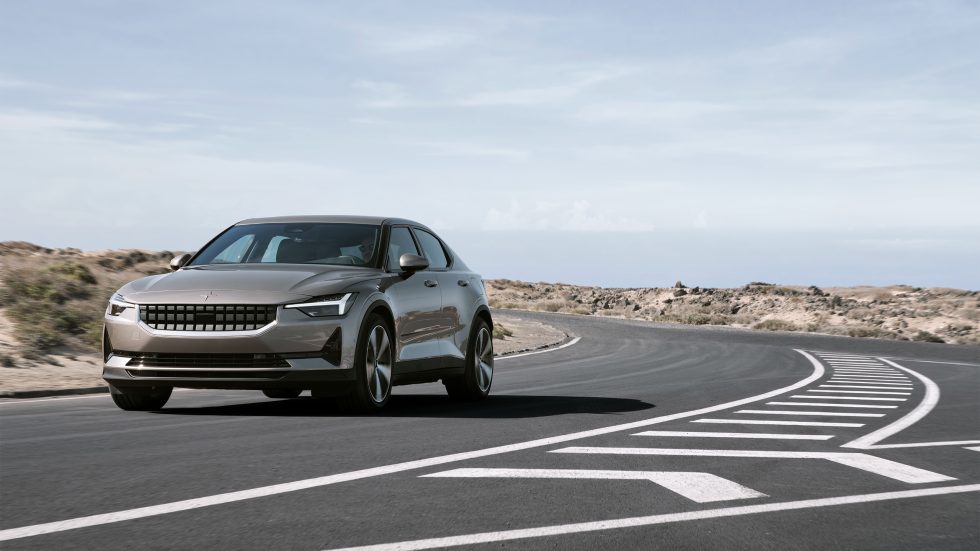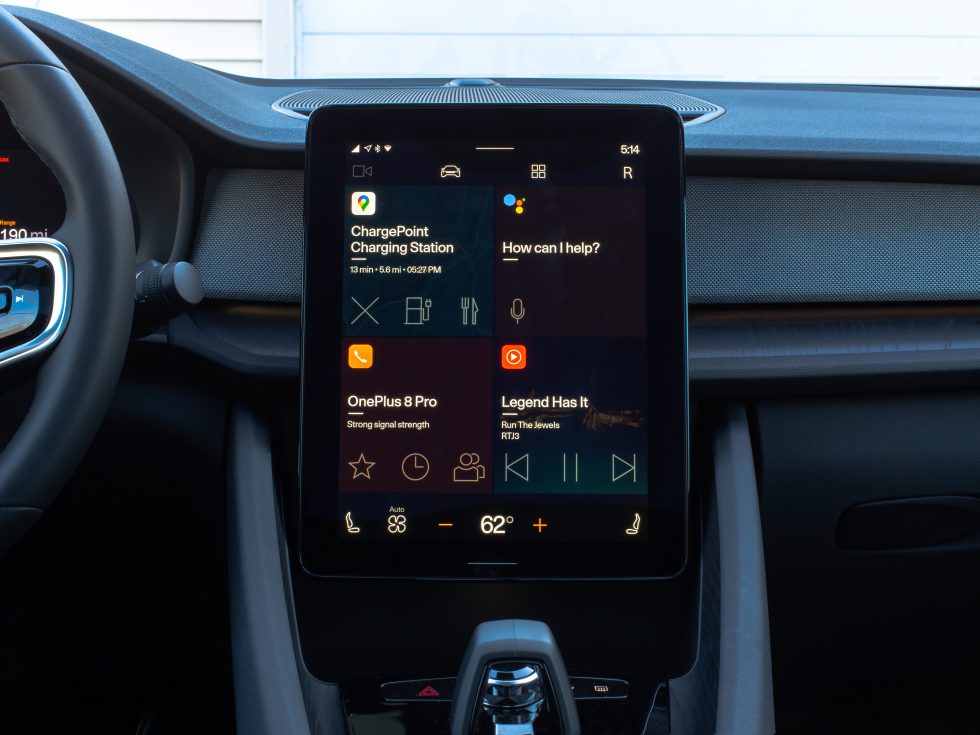
Can Google do to car infotainment what it did to smartphones?
Every car manufacturer nowadays needs to include an infotainment system with its car, and that means developing an operating system, making a UI that isn't terrible, building an SDK and app ecosystem, and doing a million other things car manufacturers have not typically needed to do. In the face of all that, Google is pulling out the Android smartphone playbook and tempting car manufacturers with a car-specific version of Android, called the "Android Automotive OS."
"Let us build your operating system!" Google essentially tells the car manufacturers. "We've got great hardware and touch support, third-party apps, and a well-known developer SDK! We'll provide Google Maps, Google Assistant voice commands, and the Play Store! We even update the codebase with monthly security updates! Best of all, for you, it's free! Just sign this contract ensuring you'll include all of our apps and services."
We've been covering the Google push into infotainment since the concept was first demoed at Google I/O 2016, but now, actual commercial cars featuring Google's operating system are starting to ship. The first Android Automotive car (and the core of today's review) is the Polestar 2, an all-electric vehicle from Volvo's new subsidiary, Polestar. Volvo also is shipping Android Automotive in the XC40 Recharge, and a ton of other companies have signed up for Google's infotainment system: Ford, GM, Stellantis (Dodge, RAM, Jeep, Fiat, Chrysler, Peugeot, Opel, etc), and Renault-Nissan-Mitsubishi. No matter your badge of preference, you're going to see a lot more of Android Automotive in the future.
Before we shift this review into gear, we have to give our usual Google-is-terrible-at-branding disclaimer: Android Automotive is not Android Auto, Google's projected car interface that serves as the company's competitor to Apple's Car Play. Android Auto runs on your smartphone and uses the car infotainment system as an external monitor. Your car's stock infotainment system still exists as... something else, it just moves out of the way for your projected smartphone interface.
On the other hand, Android Automotive OS (AAOS) is totally different. It is the car infotainment system. We're running Android Automotive on the "bare metal" of the car. It controls not just maps and media, but the air conditioning, lights, ride settings, seat location, camera views, and most other car settings. You don't need a smartphone, since Android Automotive OS is installed on the car computer storage. An onboard version of the Play Store even lets you download apps directly to your car. The car is like the world's biggest Android device.
Table of Contents
- The rising tide of car infotainment?
- The basics of AAOS
- The Polestar 2 hardware—an iPad clone with Intel Inside
- The setup process—What’s a phone?
- The Polestar 2 home screen basics
- The Play Store and the very, very early beginnings of a car app ecosystem
- The killer apps—Google Maps and the Google Assistant
- Under the hood with Android Automotive
- Garage mode and power management
- RROs, the future of Android OEM customization?
- Flash wear management
- Android, but not enough Android
- A solid platform, but it needs work
- The good
- The bad
- The ugly
The rising tide of car infotainment?
Car infotainment software is still a hot mess of fragmented development that is almost entirely up to the car manufacturer to figure out. By and large, each company goes to market with a custom operating system. And if we look at how the smartphone and PC markets have played out, that does not seem like a viable long-term solution. Dell, Lenovo, and HP don't make PC operating systems, and Samsung, BBK, and Xiaomi don't make (successful) smartphone OSes. Other than Apple, all these hardware companies focus on hardware, and the OS is licensed from a software house. The phone and PC markets both started where the car infotainment market is now, with hardware vendors all building a myriad of different software solutions, but the demand for better application and hardware support has caused both industries to coalesce around one or two OSes each.
Until the Android Automotive launch, there really haven't been any platform-building operating system vendors offering solutions for the car infotainment market. The biggest player offering a capable core OS is Blackberry's QNX, but Blackberry is pitching QNX as "middleware" instead of as an app platform. Blackberry's app strategy seems to firmly be "let someone else deal with that," with web apps and CarPlay/Android Auto as its app solution. Microsoft used to offer a car OS, but its big partner, Ford, bailed on the company for QNX and is headed for Google in 2023. Even then, Microsoft wasn't pitching a full app ecosystem.
Google's move into the car infotainment space today feels a lot like its move into the smartphone space in 2008. There are a million different car manufacturers all shipping different operating systems with no central app distribution system. Even if two companies are using similar operating systems, app developers still have to support, update, and maintain individual apps for each manufacturer platform. Pandora is a great example of an app really dedicated to car support—it has over 20 car brands listed on its support page. That number is a bit fluffed up thanks to companies like GM sharing a platform across four car brands, but it's still a ridiculously high number of apps to support.

Other than QNX, car manufacturers have been scraping together their own solutions. Lots of companies roll with a Linux distribution, either of their own design—like Tesla (an infotainment stand-out) and BMW—or as part of the Linux Foundation's "Automotive Grade Linux" project, which is favored by Toyota. For the purpose of this review, it's particularly interesting that there are a lot of Android forks out there powering infotainment without Google's involvement. Honda infotainment systems are all based on Android, anywhere from version 4.0.4 to 6.0, while Hyundai and Kia are up to Android 4.2. GM's new infotainment software is based on Android 6.0, and the company messed it up so badly there is a class-action lawsuit over the many issues the system has. Executed well or not, these are all grossly out-of-date versions of Android.
On smartphones, Android gets a bad rap for the slow (and oftentimes nonexistent) rollout of updates from manufacturers, with companies like Samsung taking 3-6 months to roll out the latest OS updates to its lineup. That's bad in comparison to iOS (and Pixel phones, I guess) with their day-one updates, but that would be an incredible improvement for the car infotainment space. Android Automotive on the Polestar 2 is based on Android 10, an OS that is only a year-and-a-half old (instead of the 6- to 9-year-old version of Android that Honda, Hyundai, and GM are employing). As of April 2021, the car got its last security update in December 2020. Again, that's bad for a phone but way better than rolling around with eight years of bugs and security vulnerabilities in your Android 4.2-powered Kia.
With Android Automotive, I don't think the point right now is to do a blow-by-blow feature comparison to other infotainment systems out there. Franky, Android Automotive would lose. It's actually a pretty beta-feeling operating system lacking many features. You'd definitely get a better experience from something like a Tesla, and I think even Android Auto running on a phone might be preferable.
Instead, what you get right now is a stable platform that feels like it is built for the future, as opposed to the technological dead-ends that make up most modern car infotainment systems. This is a solid version 1.0 OS that is competently developed and maintained, with a centralized app store, a well-known SDK, and one or two killer apps. Assuming Google does not do the Google thing and inexplicably kill Android Automotive (in this case, they are probably contractually obligated to not do this), there will be a version 2 and 3 of this software, along with a string of monthly security updates. That package would be much, much more than you can say for most car operating systems.
A single car manufacturer's infotainment system being good only helps that car manufacturer, but, just like the Android-for-phones model, Android Automotive can be a rising tide that can lift all boats. For all these car companies that seem to not care all that much about infotainment, here is a licensable operating system that is dramatically better than the ancient codebases these companies are shoveling out the door. It's easier to get started, it comes with an app selection, and it's hard to go wrong with the headline-feature bullet point of "We've got Google Maps!"
The basics of AAOS
Android Automotive has been in development forever. Google employee LinkedIn profiles tell us the project started in 2014. Internally at Google, Automotive has grown through "7 Android dessert releases," probably meaning it has been around since at least Android 5.0 Lollipop. Given that the first rumors pointed to an Android 6.0 Marshmallow (2015) release, that checks out. Google has been sneaking automotive-centric features into mainline Android releases for years.
Today, Android Automotive's latest version that you can actually run, even on the emulator, is based on Android 10. Google posted release notes for "Android Automotive 11" with some great-sounding features like searchable settings and multizone audio, but it's not available anywhere as far as we can tell. (When does the Google Pixel Car come out?) The Polestar 2 first shipped with Android 9, the first commercial release of Android Automotive, but that lasted about a month and was upgraded to version 10 in January 2021. Apparently, like Android TV or Wear OS, Google can do under-the-hood OS upgrades without changing the above-board interface that much. Speaking of those other Android form factor spin-offs, it was a surprise to see that Android Automotive is open source—you can dig it out of the usual AOSP repo. I say it's a surprise because while Android for phones is famously open source, Android TV, Android Things (RIP), and Wear OS are not.
Google does monthly security updates for Android Automotive, complete with the usual security bulletin releases just like a phone. These updates include all the fixes from the regular Android security bulletins. But since they only list additional, Automotive specific problems, they have, so far, all been blank. The Polestar 2 has averaged one OTA update a month since its release, though unfortunately, those updates haven't included Android security updates. As of April 2021, the latest update for the Polestar 2 was only a January 2021 security patch.
Automotive is the only Android form factor besides the main codebase to get security bulletins, and along with the source code availability, Google makes it seem head-and-shoulders more important and Android-like than Android TV or Wear OS. Automotive is clearly Google's second favorite flavor of Android.

There are actually a ton of Android analogs that have been re-created for Automotive. While the Open Handset Alliance is a group of smartphone OEMs dedicated to Android, Automotive has the Open Automotive Alliance, which is a Google-led group of manufacturers bringing Android to cars. On phones, Android is free and open-source, but Google would really like it if you licensed the proprietary "Google Mobile Services" app collection, which brings things like the Play Store, Google Maps, and Google Play Services. On Android Automotive, Google has the manufacturers sign up for the proprietary "Google Automotive Services" with car versions of Maps and the Play Store.
Android Automotive is skinnable, just like a smartphone. Car manufacturers can make it look like whatever they want, just with the Android code base, APIs, and app ecosystem underneath. Basing our initial review of Android Automotive on the Polestar 2 is a little awkward since our only commercial look at the OS is this version that's been skinned by Polestar—it's a lot like trying to figure out new Android features by looking at a Samsung Galaxy phone. It's not necessarily clear which features and limitations are the fault (or credit) of Google or Polestar. We can help with this a bit by also firing up the Android Automotive emulator in Android Studio, which will give us an unskinned version of the OS, but it's unclear how finished that is, since it doesn't actually ship on anything. The other downsides to the emulator is that it's trapped inside a computer screen with limited access to the outside world, and it's designed for a much smaller display than the Polestar. We're doing our best here, though.
The hands-down most disappointing thing about Android Automotive for me is that developer mode is completely disabled on production cars. You can't sideload apps, or tether a laptop to the car and run ADB, or pull apps off the car or take screenshots. This is disappointing first because I can't have any fun—I wanted to benchmark a car and sideload a bunch of stupid, impractical apps—but it also seems like it would make development harder than it needs to be. There is just no way to test an Automotive app on an actual car.
Safety is a constant concern with these car computers. AAOS gets to see the car speed, gear, and parking brake status, and it can adjust the UI accordingly for apps that are not "safety optimized." There is a whole service that manages UI safety restrictions based on the current driving state. Some features can be totally disabled while moving, like Bluetooth setup, the Play Store, or the car manual, and apps can adjust or turn off individual features while moving, like the QWERTY keyboard, list length, text box length, dial pads, text messages, videos, and more. In Android 11, there's also a safety restriction mode for passengers, which presumably would open up more features when a second person is in the car.
Like every other infotainment system, car manufacturers are responsible for determining what is and isn't safe in each driving mode, and these decisions are often made with local regulatory bodies, like the National Highway Transportation Safety Authority (NHTSA) in the US. In the future, a car with more advanced autonomous features might open up the feature set more while rolling down the road.
reader comments
182